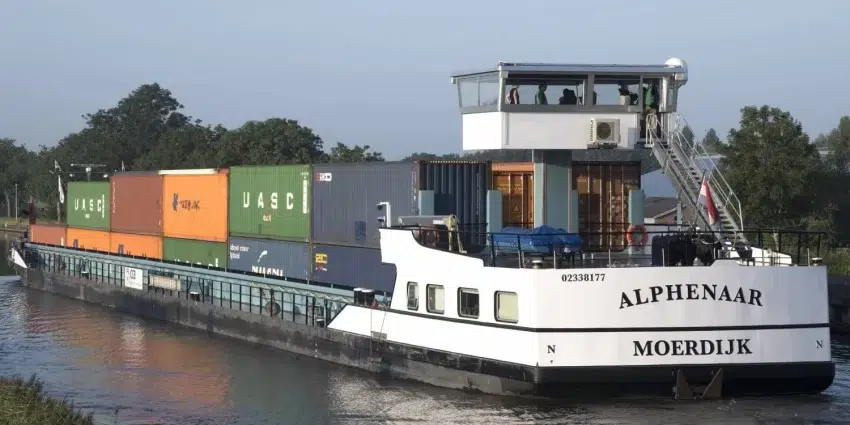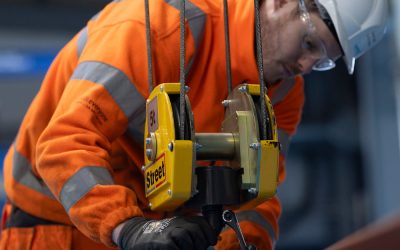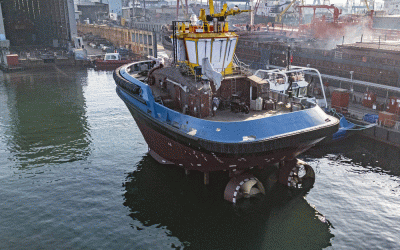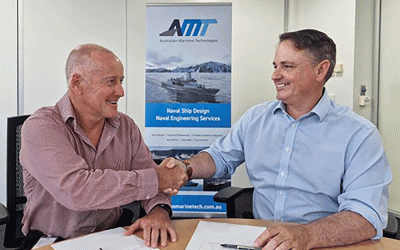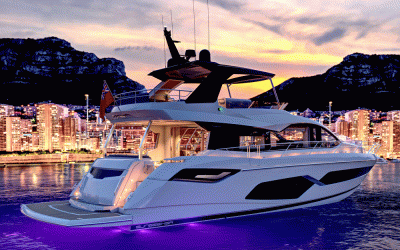While the 90m x 10.5m inland container vessel Alphenaar keeps the Netherlands well lubricated – transporting about 70,000 containers’ worth of Heineken lager bottles annually – a different type of juice is fuelling operations.
The 104teu vessel, built by Concordia Damen in 2018, already had green kudos upon her launch, having been equipped with an electrical power train. However, a recent connector system upgrade has enabled the ship to install a swappable, mobile battery container solution, described as the first of its type in the maritime sector. The retrofit was organised by Dutch tech firm Zero Emissions Services (ZES), which aims to roll out the solution across the Dutch inland waterway transportation sector –a plan that has won the backing of the Dutch Ministry of Infrastructure and Water Management.
ZES was founded last year as a partnership between ING Bank, Engie, the Port of Rotterdam and Wärtsilä. The company’s goal is to realise 30 zero-emission shipping routes by 2030, but it also wants to build up a long-term, clean-fuel inland vessel network that will help cement the Netherlands’ reputation as a leading green shipping hub.
The first three container units, or ZESpacks, were delivered to ZES by Wärtsilä earlier this year, and two of these were installed aboard Alphenaar. The ZESpack comprises a 20’ container filled with batteries, permitting pure-electric operations and eliminating carbon emissions. Each container houses 45 battery modules, totalling 2MWh of power – equivalent to the capacity of around 36 electric cars, ZES says.
Wärtsilä adds: “When discharged, the containers can be exchanged and charged onshore using energy from renewable sources. This replaceability is unique, since battery containers have thus far been stationary installations.” Each ZESpack is also equipped with an HVAC system, a fire protection skid and a firefighting system, and can be set up for remote monitoring.
ZES tells Ship & Boat International: “The containers house lithium-ion batteries with an lithium-ion phosphate [LFP] cathode, produced without cobalt.” What’s interesting is that the ZESpacks offer a future-proof solution for environmentally conscious operators. “The ZESpacks currently in use work with lithium-ion batteries, but in the future this could also be hydrogen, ammonia or something else,” ZES continues. “The ZESpack system adapts as technology advances: the container always fits on the connection, regardless of the type of energy it holds. As batteries are constantly innovated and developing in performance, there are also possibilities to expand the energy capacity of the battery container.”
To install a ZESpack, a ship would require an electrical propulsion line: “The propeller shaft has to be driven by an electric engine,” ZES says. If onboard space is not an issue, this consideration would be the most important factor. Alphenaar is fitted with two electric engines, plus a diesel engine for back-up. “The batteries connect to the electric engines via our unique connector system,” ZES says, adding that the engines have an average power of 500kW, or 600kW max.
Alphenaar can sail for around four to six hours, or for 40-60km, using a single ZESpack, depending on sailing behaviour, weather and so on. That would be enough juice to power the vessel through its delivery route, from Alphen aan den Rijn to Moerdijk. ZES says: “Eventually, Alphenaar will sail from A-to-B and B-to-A on one ZESpack, and change ZESpacks at the docking stations at locations A and B. As we currently only have one docking station, located at the CCT container terminal in Alphen aan den Rijn, Alphenaar needs two ZESpacks to commute.”
Two ZESpacks can be charged in parallel: ZES estimates that it takes two to three hours until the battery packs are fully recharged, so, this electric top-up could be conducted during the vessel’s unloading and reloading stages. “In the case of Alphenaar, the batteries are recharged overnight,” says ZES. “The operator uses a reach stacker and crane to load and unload the batteries.” To swap an empty battery for a full one takes about 15 minutes, ZES adds.
ZES’ short-term goal is to scale up to eight vessels, eight loading stations and 14 ZESpacks, and to realise, as mentioned, 30 emission-free shipping routes by the end of the decade. Willem Dedden, ZES CEO, comments: ““Within the Dutch transport sector, inland navigation accounts for 5% of the CO2 emissions. By switching from diesel-fuelled to electric propulsion, an important step can be taken towards realising the Paris Climate Agreement targets.” These targets call for a 50% reduction in emissions in inland shipping by 2030.
“Ships participating in the ZES service will eliminate around 1,000 tonnes of CO2 and 7tonnes of NOx per year,” Dedden predicts.
